“Approach students. Close the circle at the feet of the master. You have come to me asking that I be your guide along the path of Ti Kwan Leep. But be warned — to learn it’s ways, you must learn the ways of your own soul. Let us meditate upon this wisdom now…”
~ The Frantics
It was 1985. I had been in Japan for just a few short months and I had somehow found myself a “regular” job on an early morning kid’s show called “Ohayo Studio” (Good Morning Studio.) I had a small part, but it was a regular part, with spoken lines never-the-less. I had fulfilled my dream of becoming a TV star.
Ohayo Studio was geared for little kids’ viewing as they were eating cereal or whatever and preparing for school. The show started at 5 a.m. and ended at 6:30. This was sometimes a problem for me as I was often extremely hung-over.
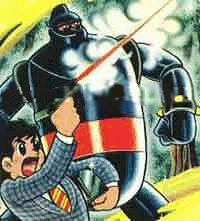 Gigantor — A 30-year-old cartoon consistently beat my show in the ratings war.
Gigantor — A 30-year-old cartoon consistently beat my show in the ratings war.
As well as taking part in skits, dressed up as a human tomato or turnip, I used to give the kids a “one point English lesson.” Useful stuff that they could go out and use immediately like, “I don’t know”; or “I can’t understand”; or “Say what? That’s whack!”
The producers of the show would also send me out to do strictly “Japanese things” and give my dumb foreigner impression of it. Which I was very good at because I couldn’t understand half of what people were talking about.
I made Tofu; Japanese “Washi” traditional paper; Japanese dolls; and I learned how to become a Kung Fu master all in one day — I mean, not all of them in one day, of course, each task I spent a day learning.
It was an extremely cold February morning. The TV staff came and picked me up for that day’s shooting somewhere near Shibuya (in Tokyo). We arrived at the Buddhist temple at about 3:30 a.m.
The priests in training were just getting ready to start their day. I wanted to know if there was someplace warm that I could sleep. But no! That was forbidden. How was I to learn the ways of the ancient masters if I were sleeping and warm in a comfy bed?
You know, these Za-Zen monks are a peculiar lot. Some start out training to be priests and it takes an entire lifetime for some of them to reach enlightenment. Even at that, some never make it.
The really hard-core guys — and until today, it is said that there have only been 12 who survived the 1000 day ordeal towards enlightenment — Actually run a 42 kilometer marathon every day for 300 days. Then they fast for a few weeks, drinking only tea. Then they run the 300 days again. More fasting. And they keep this up until they reach the 1000 days. Most of the priests who try this out, die.
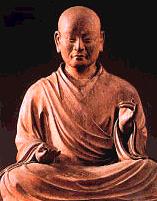 Meditating or fossilized? You decide!
Meditating or fossilized? You decide!
Funny that.
I’m not making this up, either. These guys are out of their minds. When they are fasting, they hide out in some cave at the top of some mountain and meditate. It is said that their senses become so acute that they can hear the sound of melted wax run down the side of a candle.
I tell you what, if I was starving and sitting in some scary mountain cave in the dark, I’d be hearing things too. Probably couldn’t sleep a wink either.
Anyhow we arrive at the temple and the younger priests are all outside in a single, very thin, cotton “robe.” The TV director makes me put one on too. It’s freezing — probably about 5 degrees below freezing. And these fruitcakes are out there doing calisthenics and I have to join them. I’m so cold I can barely move. I ask the director if I can wear my heavy jacket over my robe. The answer is, “No!”
 Ichi, ni, san, shi… Ichi, ni, san, shi… (One, two, three, four)
Ichi, ni, san, shi… Ichi, ni, san, shi… (One, two, three, four)
So I jump into the circle with the bald headed boys and start jumping around. We’re doing all sorts of stretching exercises and such. The priests in training don’t seem to be bothered by the coldness in the least. I guess so, I could see where, if you keep this up for any period of time, you’d be brain dead.
But that was okay for me. Because, while they were spending their entire lives learning the wisdom and ways of the Eastern masters — how to make the body and soul come together as one — As the flower sprouts from the vine. I was going to take it all in, like, in what?… An hour or so?
Since I was soon to be fluttering like a butterfly and stinging like a bee, I suppose I should pass on some wisdom to you, dear reader, about the origins of martial arts.
Japan is an ancient country that was established over 2,700 years ago. Beliefs and ways of life are handed down through many generations. Of course all things change over time. But even in today’s Japan, not only hand-guns, but even “Katana” (Samurai swords), are illegal for the average person. It has always been this way in Japan.
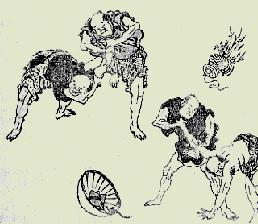 At about the time of the death of Christ, all Asian countries were very class segregated societies. There were the aristocrats, the farmers, the merchants, the warrior class, peasants, outcasts, etc.
At about the time of the death of Christ, all Asian countries were very class segregated societies. There were the aristocrats, the farmers, the merchants, the warrior class, peasants, outcasts, etc.
Even in the old days of Western class society — during the European Monarchies, it was forbidden for classes to intermingle. This is where many ideas of fables of princes marrying commoners, like Cinderella, were born. In Asia, it was the same; excepting the girls had dark hair.
These were the days of struggle for control of the land between various warlords. So in most of Asia, including Japan, only the warrior classes were allowed to have weapons.
For over a thousand years, wars were fought between the warrior classes for control of territory and for honor. These wars were first generational warfare. The armies would decide when and where to meet and they would fight it out at the appointed place. To be defeated, would mean to bring disgrace upon one’s name and family.
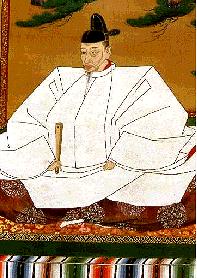 Toyotomi Hideyoshi
Toyotomi Hideyoshi
These battles, as well as who won or lost, usually did not affect the people in the other classes. For the merchants and farmers, it didn’t matter who was warlord at the time. They would be taxed. Of course there was no concept of democracy — or even the notion of the people rising up and fighting the warrior class.
But if only warriors could have weapons, then how did the other classes of people defend themselves?
And here is where Martial arts like Kung Fu and Karate were born. Even though the exact history is unknown, it is generally believed that the origins of Martial arts in Japan can be traced back to around 2000 years ago. Even further back, these methods of training and self-defense are said to come from a priest from India, named Dharma, almost 4000 years ago.
Since the peasants and farmers were not allowed to own weapons, they learned how to use farm tools and sticks as lethal weapons for self-defense. The local warlords could not outlaw sticks or scythes from the farmers. The farmers needed these tools to care for their crops.
These tools, then, became the tools for Kung Fu and other ancient Eastern ways to fight…. Karate, by the way, means, “empty hand.”
 Since the warriors were all employed by the aristocrats, the warlords — in order to consolidate power — ordered all weapons taken away from the other classes. In Japan’s case, Toyotomi Hideyoshi instituted this law, called the “Sword hunt” in 1585. The collected weapons were all melted down and the Great Buddha statues were built.
Since the warriors were all employed by the aristocrats, the warlords — in order to consolidate power — ordered all weapons taken away from the other classes. In Japan’s case, Toyotomi Hideyoshi instituted this law, called the “Sword hunt” in 1585. The collected weapons were all melted down and the Great Buddha statues were built.
Okay, now since I knew when all this stuff happened, all I needed to know was how. Because, after jumping around in the freezing cold at 4 in the morning, I was ready to go out and start trashing bozos.
After exercising, we had to go in and clean the temple. The place looked spotless to me. But I guess the youngster priests had to clean it every single day as part of their ritual training.
Now this particular temple was seven hundred years old and it was huge! The other young-guy priests grabbed these tiny little “pillow-shaped” cloths and started running up and down the hallways of the domed temple. The cloths weren’t 6 inches across. I said:
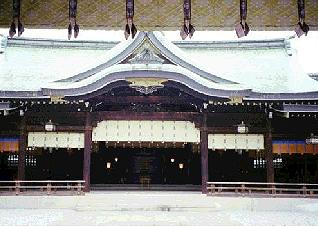 “Don’t you guys have a mop or something?” They ignored me and kept running. Funny these Buddhist priests, they don’t talk too much.
“Don’t you guys have a mop or something?” They ignored me and kept running. Funny these Buddhist priests, they don’t talk too much.
I opened a few doors that I thought were closets to see if I could find a vacuum cleaner. But there were none. The director and the camera crew came into the room and the director got mad at me for goofing off. He ordered me to get on my hands and knees and clean the temple like the other guys.
Oh! What back breaking work. It took four of us over an hour to clean that entire temple with those dinky cloths.
“Haven’t these people ever heard of electricity?” I thought.
After cleaning up, it was time for breakfast and I was starving. All the priests gathered around a long table and the head dude sat at the end. Before we went into breakfast, the director told me:
“Now Mike, in this particular Buddhist sect, you are not to make a single sound when eating. Not even the clanking of utensils. No noise what-so-ever.”
Kind of strange, sure. But I didn’t care! I was ready for some waffles and bacon and eggs. Well, the food came out and it consisted of a small bowl of rice, two pickled vegetables, and a bowl of fish-flavored steam.
“What!? Is this all we’re going to get? I’m going to starve.” I thought.
It was eerily quiet. It was weird, no one made a single sound. Excepting one of the young assistant directors, a guy named Takahashi, he belched. I started to snicker. Then the director couldn’t control himself and he started to laugh too. You know how it is when you are trying to be quiet, but you can’t stop laughing? Well, that’s what happened to us. We were all laughing. Rice was coming out of my nose.
Then at the end of the table, the head priest slowly looked up to us with his very stern, as a matter of factly face. This guy was scary and we shut up immediately. You know that even though he was at least 85, he could wipe the floor with all of us at the flick of a wrist. You don’t mess around with these big-shot priest dudes.
After we screwed up the solemn atmosphere of a ritualistic breakfast, I had to go back to the temple and chant and pray for enlightenment.
“What? No cigarette break?”
The younger priests-in-training and I all sat down in the temple, facing the walls. We were to chant some lines 100,000 times each day. No kidding. I couldn’t remember the words so I wrote them down on a piece of paper.
Everyone began chanting. From where you were sitting, you couldn’t see the head priest — for all I know he was having an Egg McMuffin and laughing at us behind our backs.
This chanting business went on for a long time and every once in a while I could hear this, “Whack!” sound.
“What the hell is that sound?” I thought. I kept chanting. I was soon to find out what that sound was as just as I began to think:
“Man, this is bogus. How long is this enlightenment stuff going to take? All day!? ”
The head dude priest walked up behind me and whacked me hard with this big stick he was carrying around. I guess he hit me for thinking bad thoughts. I was shocked! How did he know what I was thinking? And I was thinking in English too!
Well that was it for me. I was outta there, man! I got up and ran outta the temple and back to the TV crew van.
“Let’s go! I said, “I’m enlightened…… Never want to do that again!”
In a few hours, I was back at home and in my warm bed. A little bit wiser and a better person for it.
But I did learn something about Buddhism and martial arts that I would like to pass on to you, young grasshoppers:
Zen Buddhists say, “Mu” is happiness. “Mu” translated into English means “nothing.” You see? “Nothing is everything. So everything is nothing.” The true key to happiness is nothing.
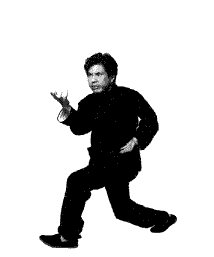 And I learned it well. For what took many people a lifetime to achieve, I had achieved in just a few hours. It’s called “Satori” in Japanese. And Satori means “enlightenment.” So I enlightened my cigarette, turned on the TV, and I stayed in my warm bed for the rest of that day, doing absolutely nothing.
And I learned it well. For what took many people a lifetime to achieve, I had achieved in just a few hours. It’s called “Satori” in Japanese. And Satori means “enlightenment.” So I enlightened my cigarette, turned on the TV, and I stayed in my warm bed for the rest of that day, doing absolutely nothing.
I had achieved heaven.




